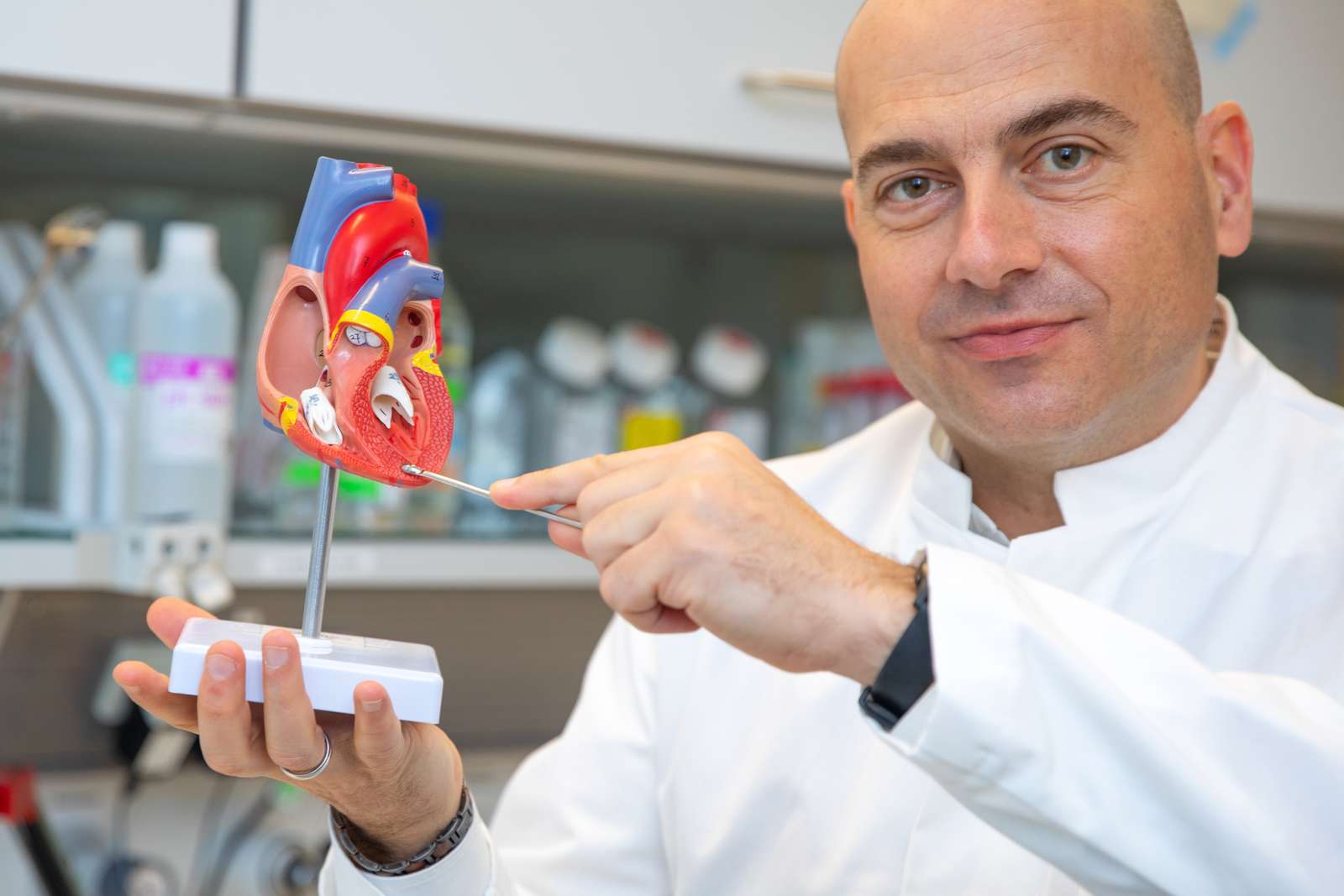EU funds research project on the therapy of cardiac fibrosis with around 2.5 million euros

On the way to a drug against cardiac fibrosis: Professor Dr. Dr. Thomas Thum receives 2.5 million euros to further develop his RNA therapeutic agent. Source: Karin Kaiser / MHH.
22.04.2022
About four million people in Germany suffer from cardiac insufficiency. One characteristic of the disease is the stiffening of the heart muscle because connective tissue cells are deposited, the so-called fibrosis. For years, Professor Dr. Dr. Thomas Thum, head of the Institute for Molecular and Translational Therapy Strategies at the Hannover Medical School (MHH), has been researching a remedy for the hitherto incurable cardiac fibrosis. He has already received the highest science funding from the European Union for this. Now the European Innovation Council (EIC) is supporting the physician again. As part of the newly created funding line for innovations, the scientist will receive around 2.5 million euros for his FIBREX project. The goal is to further develop a therapeutic agent he discovered into a drug candidate.
RNA antagonist reduces fibrosis tendency of the heart
In heart failure, the heart muscle is too weak to supply the body with enough blood, which then lacks oxygen and important nutrients. However, for half of those affected, pumping efficiency is not the real problem. Their heart is too stiff due to tissue remodelling to open and fill the heart chambers with enough blood. So far, this cardiac fibrosis is hardly treatable. Professor Thum and his research team are focusing on so-called long non-coding RNAs (lncRNA). These are building blocks of our genetic material that are not responsible for the production of proteins, but control certain processes in the cells.
In the ERC project LONGHEART, the research team discovered a specific lncRNA called Meg3, which controls fibrosis formation in heart failure, and produced a custom-fit blockade building block. In the mouse model, this significantly reduced the tendency to fibrosis. In the ERC follow-up project MEGFIB, the research team investigated whether the Meg3 inhibitor could also stop fibrosis and improve heart failure in human heart muscle cells and heart tissue. "Our revolutionary technology worked excellently," the cardiologist is pleased to report.
Funding enables further development into drug
The FIBREX project is now the logical continuation of the research work. "We are now further testing the Meg3 inhibitor in animal models for efficacy safety in order to reach clinical maturity," explains Professor Thum. For this phase of drug development, it is usually very difficult to get the necessary financial support. "The new EU innovation funding line now closes this gap," Thum emphasises. "We are confident that we will further develop our patented Meg3 inhibitor into an effective fibrosis drug that will drastically revolutionise medical practice, reduce healthcare costs and, last but not least, significantly improve patients' lives."
SERVICE:
For more information, contact Professor Dr. Dr. Thomas Thum, thum.thomas@mh-hannover.de, Telefon +49-511 / 532-9174.